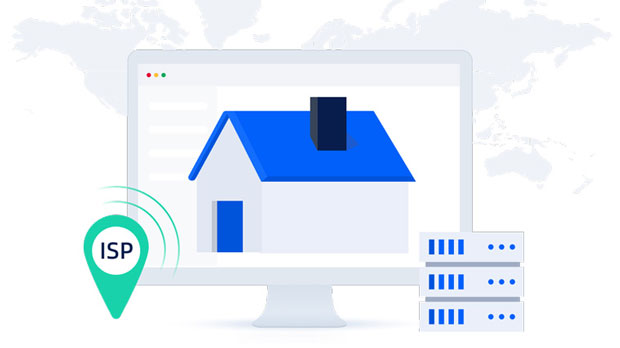Multi-Platform Support for Computers, Cell Phones and Routers with Free Premium SOCKS5 proxy
Free advanced socks5 proxies have become a popular solution for internet users seeking enhanced privacy, security, and unrestricted browsing. These proxies offer a versatile and efficient method to hide online activities, allowing users to bypass geo-restrictions, enhance anonymity, and improve overall security while browsing. What sets advanced SOCKS5 proxies apart is their ability to support a wide variety of platforms, including computers, smartphones, and even routers. This multi-platform compatibility ensures that users can maintain secure and anonymous internet access across different devices without compromising performance or convenience. Understanding socks5 proxy: A Secure and Flexible SolutionSOCKS5, which stands for "Socket Secure version 5," is an advanced protocol that provides enhanced privacy and security for online activities. Unlike other proxy protocols, SOCKS5 works by redirecting all kinds of internet traffic, such as web browsing, file sharing, or online gaming, through a secure intermediary server. This makes it an ideal option for users who want to maintain their anonymity, bypass regional restrictions, or avoid potential surveillance while using the internet.One of the key features of SOCKS5 is its ability to handle various types of traffic, which means it is not limited to web browsing alone. Additionally, SOCKS5 supports a range of authentication methods, providing more flexibility and security for users. The advanced SOCKS5 proxy also features better speed and reliability compared to older proxy protocols like SOCKS4, which adds to its appeal.Why Multi-Platform Support MattersThe rise of multi-platform support is one of the biggest advantages of modern proxies, and advanced SOCKS5 proxies are no exception. The ability to use a SOCKS5 proxy across different devices—computers, smartphones, and routers—provides unparalleled convenience and consistency for users. Here’s why multi-platform support matters:1. Consistency Across Devices: A single SOCKS5 proxy configuration can be applied across multiple platforms. This means whether you’re using a desktop computer at home, a smartphone on the go, or a router to secure your entire home network, your online experience remains seamless and secure.2. Better Privacy and Security: With multi-platform support, users can ensure that all their devices are protected simultaneously. Whether you’re browsing the internet on a computer or accessing social media via your mobile phone, a SOCKS5 proxy ensures that your IP address is masked, offering enhanced privacy and security.3. Bypass Geo-Restrictions on All Devices: Many content providers restrict access to their services based on geographic location. A SOCKS5 proxy allows users to bypass these restrictions on all their devices, unlocking content and services that might otherwise be unavailable in certain regions.Free Advanced SOCKS5 Proxy for ComputersWhen using a free advanced SOCKS5 proxy on a computer, users benefit from secure and private browsing with minimal effort. Most SOCKS5 proxies are compatible with a wide range of operating systems, including Windows, macOS, and Linux, allowing users to install the proxy easily.1. Enhanced Privacy: By routing all traffic through an intermediary server, the SOCKS5 protocol helps hide your real IP address, making it much harder for third parties to track your online activities. This is especially important when accessing sensitive content or conducting private communications.2. Unrestricted Access: Computers are often used to access region-locked content, such as streaming services or specific websites. By using a SOCKS5 proxy, users can simulate a connection from another region and access content that might otherwise be blocked.3. Efficient for P2P and Torrenting: SOCKS5 is known for its ability to handle P2P traffic efficiently, making it an excellent choice for torrenting. It allows users to download and upload files securely, protecting their IP addresses and ensuring privacy during file-sharing activities.Free Advanced SOCKS5 Proxy for SmartphonesSmartphones are central to modern life, and using a free advanced SOCKS5 proxy on mobile devices provides similar benefits as on desktop computers. Both iOS and Android devices support SOCKS5 proxies, allowing users to secure their online activities while using mobile apps, browsing websites, or accessing public Wi-Fi networks.1. Security on Public Networks: Public Wi-Fi networks, such as those found in cafes, airports, or hotels, are often unsecured and vulnerable to hackers. A SOCKS5 proxy ensures that your internet traffic is encrypted, protecting you from potential cyber threats.2. Location Spoofing: Many apps and services on smartphones use your location for customization. A SOCKS5 proxy can help users spoof their location, allowing them to access region-specific content or bypass geo-blocked apps.3. Faster Browsing Experience: While mobile data networks are often slower than home broadband, using a SOCKS5 proxy can potentially help optimize internet speeds by bypassing bottlenecks caused by local ISPs, improving overall performance.Free Advanced SOCKS5 Proxy for RoutersOne of the lesser-known but powerful ways to utilize a free advanced SOCKS5 proxy is by configuring it on a router. This approach extends the benefits of SOCKS5 to all connected devices within a home or office network, providing secure and anonymous internet access for every device without needing to configure each one individually.1. Network-Wide Security: By setting up a SOCKS5 proxy on a router, users ensure that all devices connected to the network are protected. This includes laptops, smartphones, smart TVs, gaming consoles, and even IoT devices. As all traffic passes through the proxy server, users gain consistent security and anonymity across the board.2. Efficient Internet Management: For households with multiple devices, managing internet access and privacy on each individual device can become cumbersome. Configuring the SOCKS5 proxy at the router level simplifies the process, offering a single point of control for the entire network.3. Compatibility with Smart Devices: Many modern smart devices, such as smart TVs, home assistants, or gaming consoles, don’t support direct installation of proxies. By using a router-based SOCKS5 proxy, users can ensure these devices benefit from enhanced privacy and security without needing complex configurations.Challenges and Limitations of Free SOCKS5 ProxiesWhile free advanced SOCKS5 proxies offer numerous advantages, there are some challenges and limitations that users should be aware of:1. Limited Bandwidth and Speed: Free SOCKS5 proxies often have limited bandwidth and speed compared to paid services. This can affect the quality of streaming, browsing, or downloading, especially if you’re trying to access content in high-definition or use bandwidth-intensive applications.2. Security Risks: While SOCKS5 proxies are generally secure, free services may not provide the same level of encryption and protection as paid alternatives. Users should be cautious of potential security vulnerabilities when using free proxies, particularly if the service provider has not been thoroughly vetted.3. Reliability Issues: Free services can suffer from downtime, slower speeds, or inconsistent performance, especially during peak usage hours. Users relying on a free socks5 proxy for critical tasks may experience interruptions or delays.ConclusionFree advanced SOCKS5 proxies with multi-platform support provide an invaluable tool for enhancing privacy, security, and freedom online. By supporting computers, smartphones, and routers, these proxies ensure that users can maintain consistent protection and unrestricted access across all their devices. While there are some trade-offs in terms of speed and reliability with free services, the benefits they offer in terms of privacy and geo-unblocking make them an appealing choice for many internet users. However, it’s important to evaluate both the advantages and potential limitations of free SOCKS5 proxies to make an informed decision based on individual needs.
2025-01-07

























































